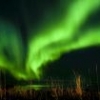It's the glass, stupid....
-
Recently Browsing 0 members
- No registered users viewing this page.
-
Similar Content
-
- 13,233 replies
- 1,126,252 views
-
- 1 reply
- 168 views
-
- 15 replies
- 1,169 views
-
- 10 replies
- 2,994 views
-
Leica Monochrom with Noctilux 50mm f0.95............and other exotic glass....enjoy !!!!
By GLOBETROTTER,
- 4 replies
- 922 views
-



Recommended Posts
Join the conversation
You can post now and register later. If you have an account, sign in now to post with your account.
Note: Your post will require moderator approval before it will be visible.